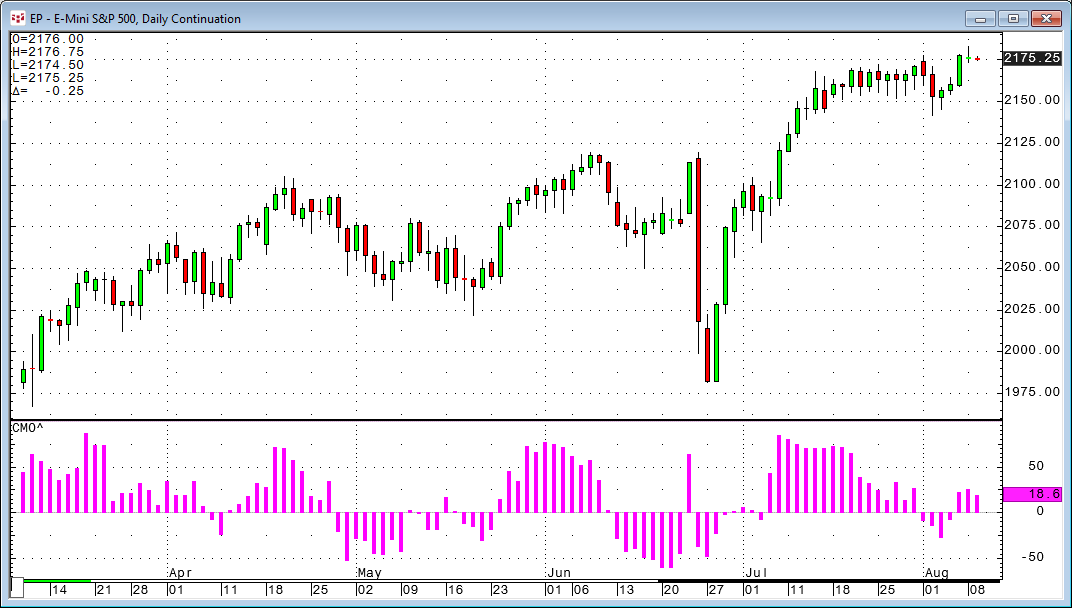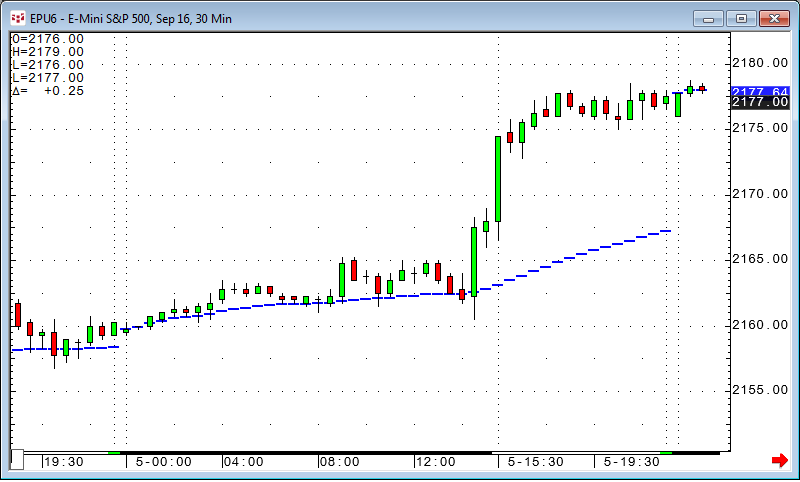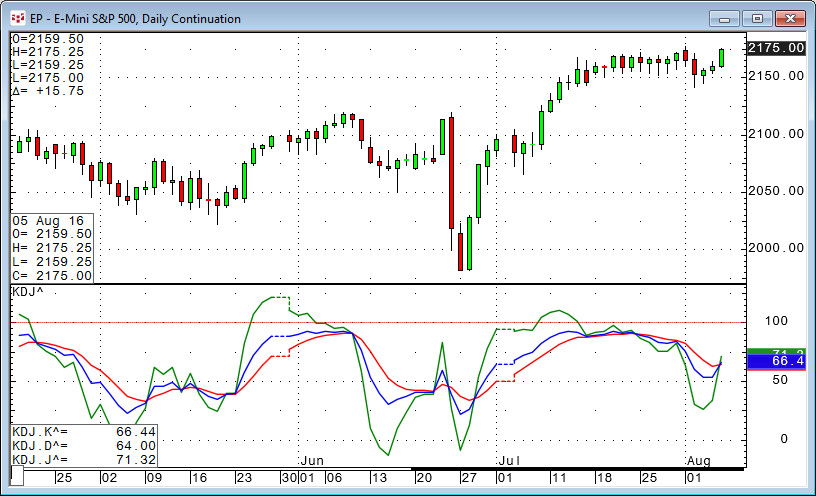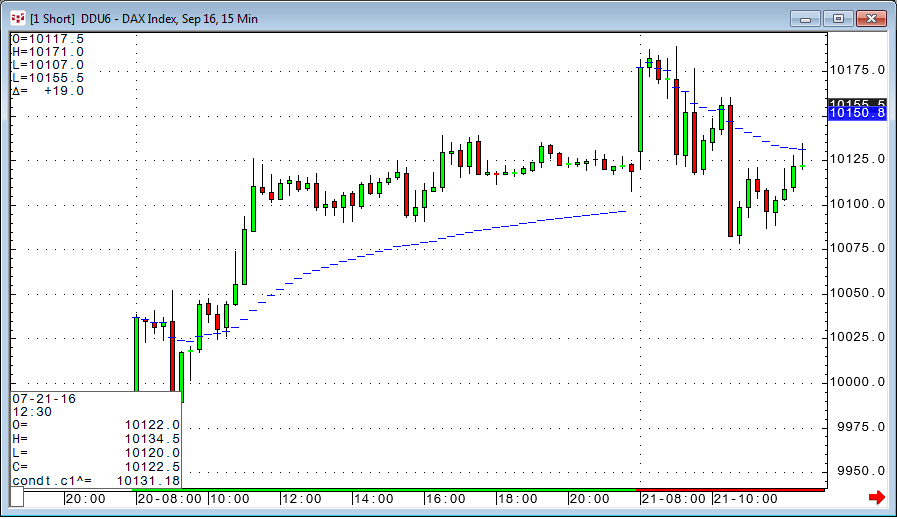This Microsoft Excel® dashboard offers a two-window view for tracking market performance. The top half displays market data using symbols such as indices, stocks and futures that the user… more
Partners
CQG provides the ability to separate volume into trades executed at the best bid price and trades executed at the best ask price. This feature gives you more insight into market action because you… more
CQG's backtesting does not have the ability to feed P&L information back into the trading system itself. The autotrading environment, however, has a solution for that: the P&L… more
Chande's Variable Index Dynamic Average (VIDYA) is similar to the Exponential Moving Average (EMA), but automatically adjusts the smoothing weight based on price volatility.
VIDYA was… more
A technical momentum indicator invented by the analyst Tushar Chande.
The Chande Momentum Oscillator is created by calculating the difference between the sum of all recent gains and the sum… more
Volume-Weighted Average Price with Bands
VWAP is the volume-weighted average price for a futures contract plotted as a line on the price chart. The calculation is the sum of traded volume,… more
Flexible Period Moving Average
The Fluid indicator is only used for intraday charts. The idea is to have a moving average with a length that corresponds to the number of bars… more
The SSK indicator using a divergence line
The KDJ indicator is actually a derived form of the Slow Stochastic with the only difference being an extra line called the J line. The J line… more
This Microsoft Excel® dashboard offers a two-window view for tracking market performance (You have to enable macros when this dashboard is first opened.) The top half displays market data using… more
In my last article I showed a little workaround to feed a calculation into a Study Parameter. We can use a very similar trick for all functions that require a separate condition for a reset. There… more







